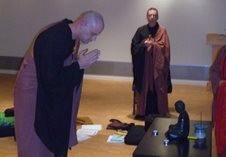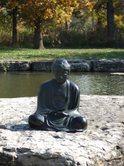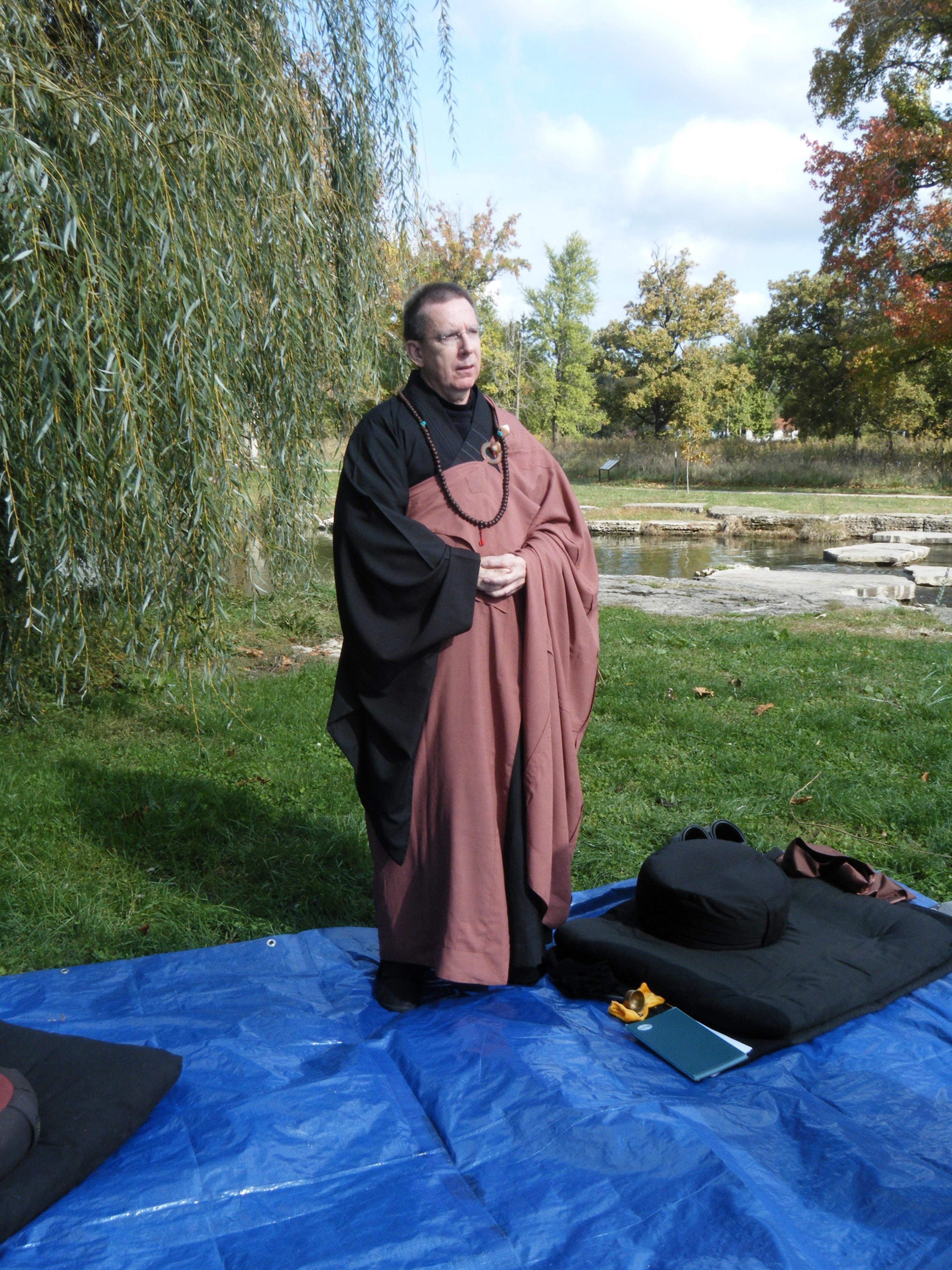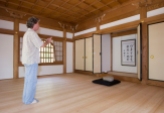by: David Xi-Ken Astor
The sixteenth century mystic John of the Cross said “Silence is God’s first language.” However, he did not have the advantage we do in the 21st century to know what every kid learns in their physics class that the universe is really noisy. Just the term “Big Bang” connotes the potential for that reality, even in it’s apparent quite as we look out into space. We might even say that it depends on what you mean by quiet. Of course we know what St. John was really saying. Silence is the normal context in which a contemplative practice takes place. Not the physical, but the mental state of quite. There is the outer silence that can surround us at times. But it is the inner silence that is the challenge. The quieting of the busy-busy mind we work to achieve in mindful meditation or zazen. In zazen, we practice to not follow our thoughts. But the contemplative state moves beyond this. We sit to listen to the quite. And that quite is heavy by nature. We become quiet itself. As Mother Theresa once said, “If you don’t understand that, I can’t explain it to you.” It is at the intersection of mindful mediation and this inner quite that a contemplative practice begins. Our meditation practice prepares us for our contemplative one. They are not the same. Zazen is study of the self in order to know the self. With that accomplishment we become ready to experience the Universe beyond just it’s material expression. Contemplative thought is a practice that brings about this third aspect of zazen, while mindful meditation works to achieve the first two. Insight beyond the spoken language is the mind state of the contemplative. We focus on a thought so we can manifest a contemplative-state of mind no longer requiring the thinking process. We are propelled into inner quite. It is an awareness of “something” beyond language to express, but our human capability to experience this wonder does not require a language to understand.
Most of us encounter effective quite moments when we attend retreats. The reason for this is that in a retreat we get a chance to step back from our busy lives. It is a time to “get into” quiet. We may even “get a way for the day” and go out into the woods for some quiet-time. In these moments we get a chance to draw inward and allow our mind to wander. Then something happens and we experience a quiet state where are body-mind for a few minutes is at rest. Sometimes we can create this moment from reading a special inspirational piece, especially if we are in our “scared” place, a place we find peaceful. Your mind free-associates away from normal dispositions and personal preferences that provides the key to renewal and transformation. Silence is the backdrop where this awakening takes place.
The silence we associate with meditation or contemplation most of us are familiar with. It is one of the things we like about stepping into a Buddhist meditation center, or the sanctuary of a cathedral. But there is another type of silence that is less informal and directed. The intentional silence we invoke in our monastic insight-practice allows us to detach ourselves in order to listen for awakened moments. Yes, these moments can come to us in zazen too. But where zazen is not structured generally (zazen = just sitting), contemplative practice requires a structure that is mentally erected for the purpose of standing-on-silence. We learn to follow this silence with skill. What an untrained individual may think as sitting zazen is really a form of contemplation without much discipline. When an experienced individual brings a koan into their sitting practice, they have moved into the complex practice of “contemplative zazen.” Among the world’s spiritual traditions, Buddhism is one that focuses on the total transformation of the self in order to, 1) enhance human flourishing, and 2) awaken to the reality that there is no permanent self. It is in this realization that a mind honed by contemplative practice can experience.
From a monastic perspective, regardless of it’s tradition, there is a common affirmation that this form of spiritual practice is essential to experiencing awareness of our interconnectiveness with all other Universal expressions. Zazen prepares our body-mind so we can move into insight-contemplation: don’t follow, follow. Penetrating this difference is the key for a successful contemplative life. We embrace the monastic life because it gives us the opportunity for nourishing the state of mind necessary for awakening to the realities of the Universe. We can do it with zazen. We can do it with contemplative practice. But together, our monastic life expands into a different dimension.
It is interesting that while Buddhism has developed and survived over 2500 years with a massive amount of canonical texts, legacy documents and writing by enlightened masters, and the emphasis Mahayana Buddhists places on the Nakaya’s, there is yet very little inspirational material for contemplative thought among them. Yes, there are witty sayings of the Buddha and other historical teachers, but very little we can take into our silence, unlike the Christian tradition’s monastic spiritual achieves. Nevertheless, Buddhism is rich in lessons from the masters on how to effect a meditation practice that we can use to facilitate our contemplation sessions. Master Eihei Dogen is one that comes to mind.
Even with this limitation of contemplative material available from a Buddhist perspective, we can be creative in our use of other tradition’s spiritual offerings, especially in the Benedictine orders if we use creative re-description and a mind careful not to fall into the weeds of metaphysics or mystical entanglements. The old mystics have a lot to teach us on living a life of contemplation, if we let them speak to us in OUR language of understanding.
Copyright: OEB January 2014


















































































